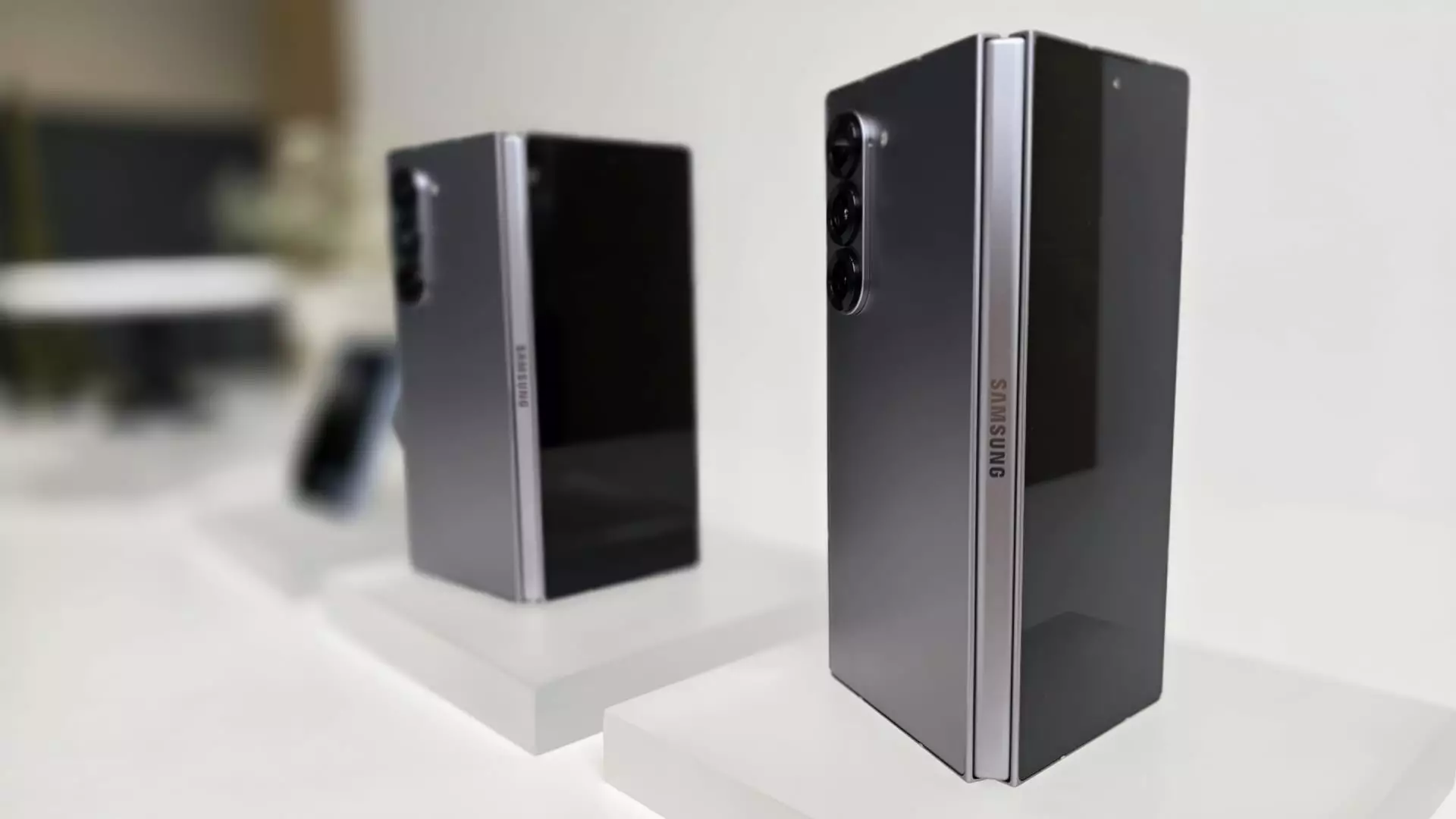The smartphone market has seen a remarkable evolution since the introduction of folding devices, and Samsung stands at the forefront of this transition. Historically, the company made a substantial impact in 2019 when it launched its first foldable, stirring excitement and curiosity among tech enthusiasts. However, as we move into a new era of smartphone design, it’s evident that the battle for supremacy in the foldable market is heating up, particularly against the backdrop of fierce competition from Chinese manufacturers. The upcoming release of a thinner version of Samsung’s flagship foldable is not merely a reaction to market trends but a strategic necessity in a landscape dominated by sleek competitors.
Competitor Analysis: A Leaner Approach
Chinese brands like Honor and Oppo have unleashed a wave of innovation, focusing on creating foldable devices that not only dazzle with their performance but also win accolades for their slim profiles. This marks a crucial turning point in design aesthetics, as consumers increasingly prioritize portability without compromising functionality. Ben Wood, chief analyst at CCS Insight, highlighted that in a market where weight and thickness heavily influence buying decisions, the advancements in foldable technology must keep pace. For instance, while Samsung’s Galaxy Z Fold6 measures a hefty 12.1 millimeters when closed, its rivals have deftly crafted models that are significantly slimmer. Oppo’s Find N5 arrives at a mere 8.93 millimeters, and Honor’s Magic V3 is only slightly thicker at 9.2 millimeters. This clear disparity in design and user experience challenges Samsung to revolutionize its approach and meet or exceed the bar set by its competitors.
Consumer Expectations and Market Dynamics
As Samsung prepares for its imminent launch, the stakes are high. The thinning of devices is crucial because today’s smartphone users are not just tech-savvy; they are discerning consumers who expect elegance in design coupled with cutting-edge technology. Thicker devices may once have been the norm, but the tides have shifted. Wood’s insight emphasizes that the transition to thinner, lighter foldables could sway consumer perceptions. Despite the current market for foldables being relatively modest—projected to only account for 2% of all smartphone sales this year—the push for sleeker designs may breathe new life into the segment.
One must ponder: what exactly is hindering the mainstream adoption of foldables? Consumer hesitation stems primarily from a lack of clarity regarding their functional advantages over traditional smartphones. With many potential buyers questioning the necessity of a foldable device in their daily lives, manufacturers must ensure that their products address real user needs while providing compelling reasons for a shift in preference.
A Tangible Step Forward for Samsung
Samsung’s upcoming thinnest iteration of its Galaxy Z series promises to bring not just physical lightness but a thoughtful design evolution that can potentially resonate with hesitant consumers. The tech giant’s claims about increased durability and advanced craftsmanship signal a commitment to increasing user confidence with foldable technology. As competitors like Honor are gearing up to unveil the Magic V5, the pressure on Samsung intensifies. Wood elucidates that if Samsung can achieve a thinner design comparable to Honor’s offerings, it would signify a monumental leap in both functionality and user experience.
The Broader Implications of Foldable Technology
Interestingly, the concept of foldables isn’t merely about immediate competition; it’s indicative of a broader shift in consumer technology trends. The rise of demand for slimmer designs could lead to shifts in production methods, requiring manufacturers to adapt their strategies accordingly. Moreover, as noted by analyst Ming-Chi Kuo, even Apple has acknowledged the foldable market, planning its entry with a folding iPhone next year. This impending competition could serve as a catalyst for innovations that will culminate in devices that not only bend but also redefine our interaction with mobile technology.
In this evolving context, the real battleground lies in understanding consumer psychology. Offering a unique experience that marries cutting-edge technology with everyday usability could make foldables a viable option for those reevaluating their smartphone choices. The significance of thinner devices cannot be understated, as Samsung and its rivals strive to win over consumers who may still be uncertain about adopting this transformative technology.

